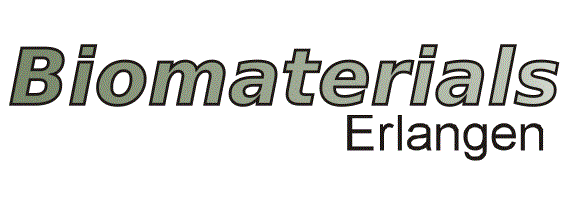Linus Hoetzel
Linus Hoetzel
Bachelor Student
3D-printing of alginate-bioactive glass composite scaffolds for cranial bone regeneration
Betreuer: Vera Bednarzig, Prof. Dr.-Ing. habil. Aldo R. Boccaccini
3D-plotting has become a commonly used technique to generate structures that mimic the natural conditions inside the human body. Due to their good environment for cells, hydrogels are frequently used materials in this process. The natural polymer alginate is a typical hydrogel used in tissue engineering. However, alginate offers low mechanical stability and is in general therefore unsuitable for hard tissue engineering. For this reason, composites of alginate and inorganic particles are being developed to improve the mechanical properties of the printed structure [1]. As filler component bioactive glass should be used in this study due to its high bioactivity [2]. The aim of this study is thus to improve cell adhesion and mechanical properties of 3D printed alginate based structures incorporating bioactive glass particles. The fabricated scaffolds will be compared concerning mechanical performance based on different filler contents and different bivalent ions that affect crosslinking.
[1] Utech, S.; Boccaccini, A. R., A review of hydrogel-based composites for biomedical applications: Enhancement of hydrogel properties by addition of rigid inorganic fillers. J. Mater. Sci. 51 (2016) 271–310
[2] Hench LL., Bioceramics. J. Am. Ceram. Soc. 81 (1998) 1705-28

